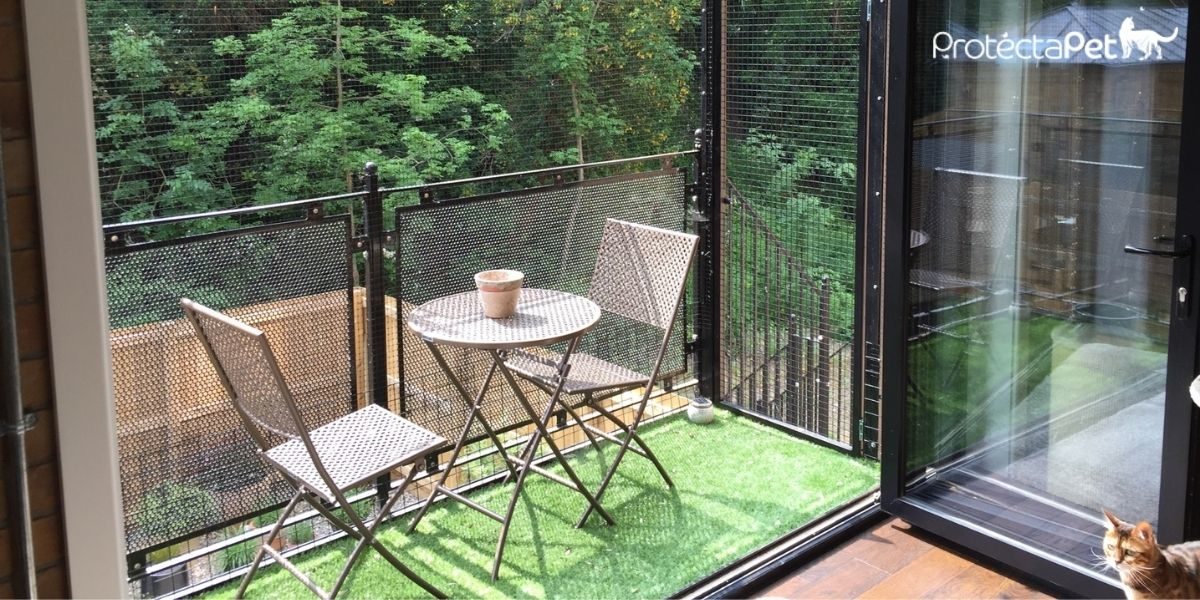‘High-rise syndrome’ in cats: they don’t always land on their feet
Breaking the myth
It is often said that cats always land on their feet – and indeed they do have a complex righting reflex that naturally kicks in as a cat falls, allowing it to orientate itself to land on its feet. However, the fall needs to be high enough to allow the cat to twist, but not too high to cause serious injury, and the cat’s legs need to be able to absorb the shock of the fall. With high falls the jaw often hits the ground and is broken, and other severe injuries can also occur. Older or less agile cats may also not be able to right themselves in time.
Why do cats fall from heights?
Increasingly, due to our growing cities and busy lifestyles, cats are kept in flats and high-rise buildings and, in many cases, without access outdoors. With hard work to ensure the cat’s environment is enriched, it can express natural behaviours such as hunting and climbing, and live happily indoors. However, if windows are left open, or cats have access to balconies, they are at risk of falling. Studies have shown that the majority of injured cats are young cats (many under 1- year- old), presumably due to inexperience and a more playful and curious nature. Owners often report that the cat or kitten was playing with another cat, walking along the window or balcony ledge or chasing birds and butterflies when it fell. High rise syndrome is more prevalent in warmer climates where windows are left open, and in cities where high rise living is more common.
What injuries do cats sustain?
As expected, the greater the height of the cat’s fall, the worse the injuries tend to be. Reported injuries include broken bones (limbs and joints as well as facial injuries such as jaw fractures), ligament injuries, and internal injuries such as bladder and lung trauma. These latter injuries, even though less obvious from the outside, are still very serious and require emergency treatment. Therefore, all cats known to have fallen from a height should be checked over by a vet.
How can we prevent falling?
Of course, high-rise syndrome is completely avoidable by taking steps to prevent a cat’s access to areas from which it can fall. However, on a hot day, it is easy to leave a window or balcony door open without thinking of the risks.
Ways to minimise the risk of falls:
- Move any furniture that would allow cats to have access to higher-level open windows
- Make open windows safe with limiters that allow the window to only open a certain amount (designed to keep children safe) – but remember cats, and particularly kittens, can squeeze through very small spaces or get stuck trying.
- Use meshes or barriers to cover open windows (eg, Cataire). These allow the window to fully open and remain safe.
- A balcony can provide valuable extra space and stimulation for an indoor cat but must be totally cat proof as well. Use balcony safety nets and meshes and remember the small gaps that cats can squeeze through (eg, ProtectaPet).
Falling from a height can be very serious or even fatal for cats. However, it is preventable by taking sensible steps so both humans and pets can enjoy the fresh air. Cats can be kept happily in flats and high-rise building, but we must ensure they have enough stimulation and play opportunities.
Thank you for visiting our website, we hope you have found our information useful.
All our advice is freely accessible to everyone, wherever you are in the world. However, as a charity, we need your support to enable us to keep delivering high quality and up to date information for everyone. Please consider making a contribution, big or small, to keep our content free, accurate and relevant.
Support International Cat Care from as little £3
Thank you.
Donate Now


